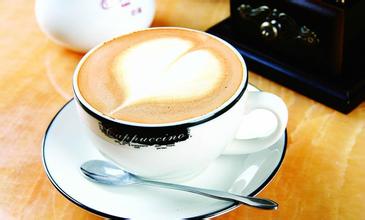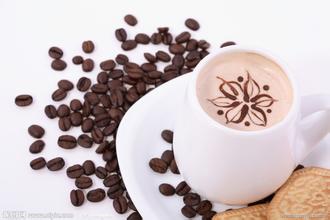Should coffee beans be roasted or mixed first?
Bake before matching, or match before baking? This has always been a topic of debate between bakers and assemblers. As with wine, blending before baking can make the aroma and quality more uniform, but the "decay" of roasting must be taken into account, as coffee from different places requires different baking time and temperature. If you have a definite recipe, you can put different coffee beans together and then bake them together. Most long-established coffee makers have their own secret recipes.
In contrast to the "blending technology school", the "baking technology school" believes that the taste of coffee depends 80% on roasting. Regardless of the percentage data, whether you are particular about the degree of "roasting" and whether you bake it yourself, this has indeed become an important indicator to verify the identity of a coffee glutton. "roasting" refers to roasting the raw coffee beans with a special machine to make the coffee beans show a unique brown color, aroma and taste. The key point is to "stir-fry" the inside and outside of the beans evenly without being overburnt. A series of chemical changes occur during baking: moisture decreases from 10% to 1%, fat from 12% to 16%, sugar from 10% to 2%, chlorogenic acid from 7% to 4% to 5%, and nitride from 12% to 14%. The physical change is: water loss, weight reduction of 10% to 15%, volume increase of 60%.
A vivid analogy is: "the roaster is a machine between a popcorn machine and a clothes dryer." The temperature in a large industrial baking bucket can reach 288 degrees Celsius, and the coffee beans first turn yellow and smell like popcorn. After about 8 minutes, it began to snap and expand, and when the temperature reached 204 degrees Celsius, the coffee beans began to turn brown and the oil began to spill out. The spilled oil is called "caffeine" or "caffeine", and the chemical reaction between calories and caffeine is called "pyrolysis", which produces a strong coffee flavor. In another 3 to 5 minutes, there will be another snapping sound in the machine, and the color of the coffee will soon change to a dark color, indicating that it has been baked. When the preset baking temperature is reached, cold air can be used to stop baking. The well-roasted coffee beans have no wrinkles on the surface and the gloss is symmetrical, which fully demonstrates its unique flavor. If you are too impatient at the beginning of baking, there will be spots on the bean skin and the taste will become bitter and choking.

Important Notice :
前街咖啡 FrontStreet Coffee has moved to new addredd:
FrontStreet Coffee Address: 315,Donghua East Road,GuangZhou
Tel:020 38364473
- Prev

Is the principle of blending coffee to balance the sweet and sour flavor?
It should be noted that we should also take into account the performance of the coffee machine and the bean grinder. If the coffee machine with low extraction rate, it will be slightly sour, and the acidity will be stronger in Italian concentration, so when testing the cup, we will try to reduce some acidity and make it a little sweeter, so that the extracted espresso will not be so sour, thus achieving the effect of sweet and sour balance.
- Next

There are two spellings of mixed beans: first baking and then mixing and then baking and cooked and spelling.
The knowledge of roasting and blending of coffee is widespread, and people need to combine coffee from different places for several different purposes. The ideal goal, of course, is to piece together a coffee that tastes better than any of them. But generally speaking, Arabica coffee from a single origin is enough to make coffee that tastes good for export: fragrant taste, soft taste and sweet aftertaste. So
Related
- Does Rose Summer choose Blue, Green or Red? Detailed explanation of Rose Summer Coffee plots and Classification in Panamanian Jade Manor
- What is the difference between the origin, producing area, processing plant, cooperative and manor of coffee beans?
- How fine does the espresso powder fit? how to grind the espresso?
- Sca coffee roasting degree color card coffee roasting degree 8 roasting color values what do you mean?
- The practice of lattes: how to make lattes at home
- Introduction to Indonesian Fine Coffee beans-- Java Coffee producing area of Indonesian Arabica Coffee
- How much will the flavor of light and medium roasted rose summer be expressed? What baking level is rose summer suitable for?
- Introduction to the characteristics of washing, sun-drying or wet-planing coffee commonly used in Mantenin, Indonesia
- Price characteristics of Arabica Coffee Bean Starbucks introduction to Manning Coffee Bean Taste producing area Variety Manor
- What is the authentic Yega flavor? What are the flavor characteristics of the really excellent Yejasuffi coffee beans?

